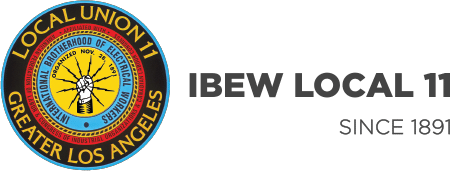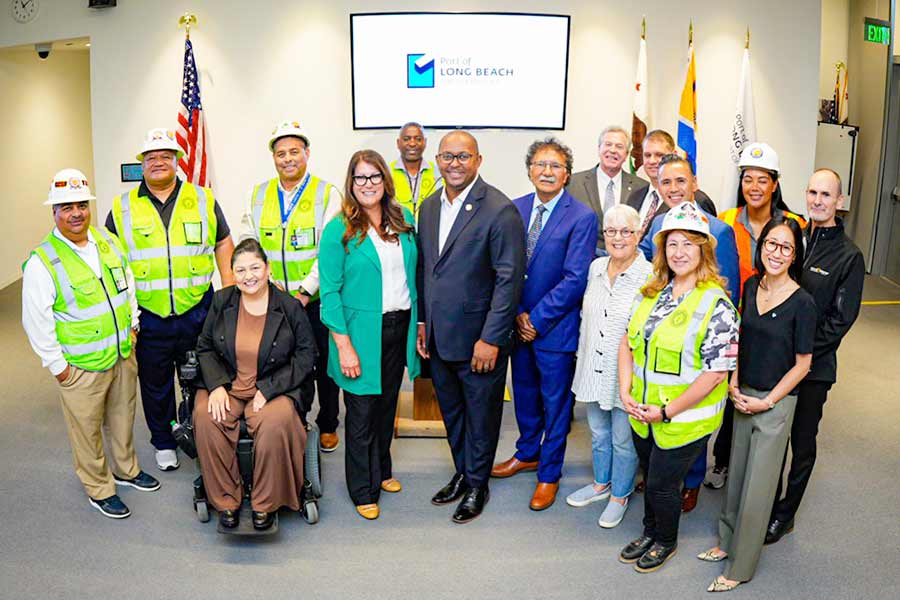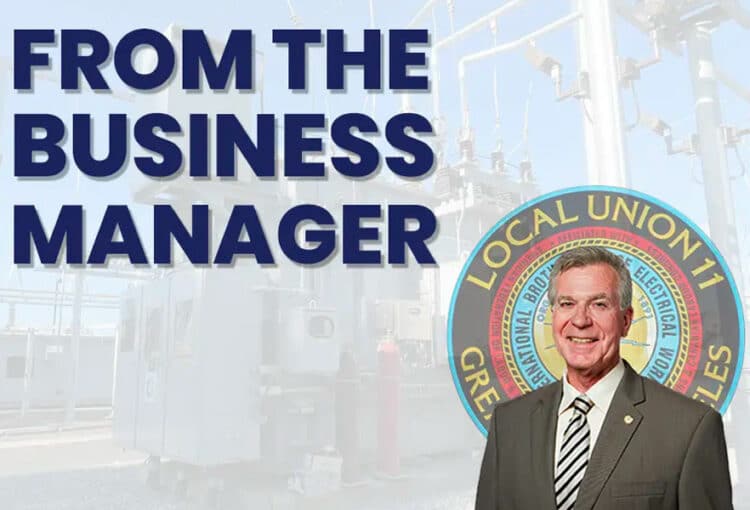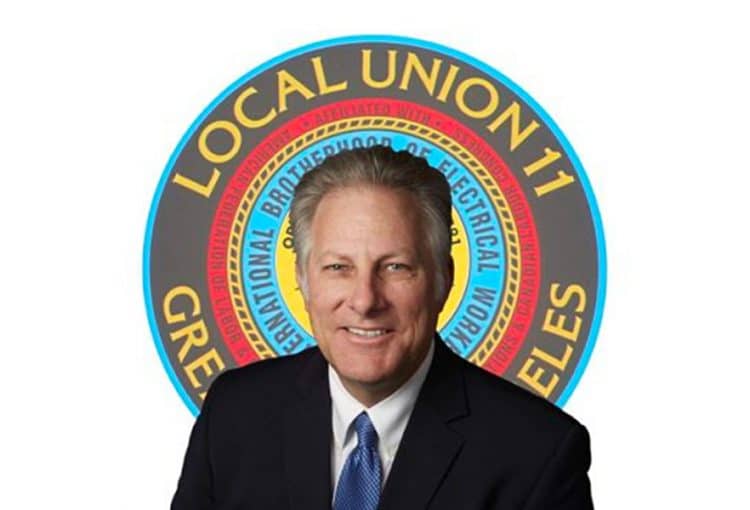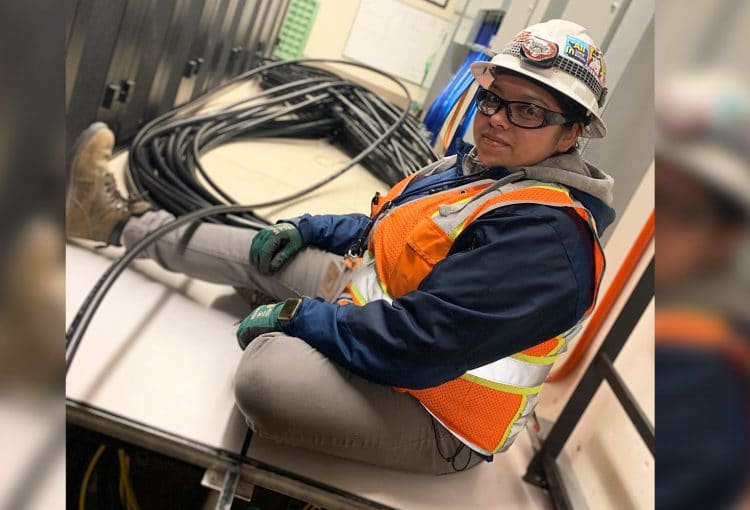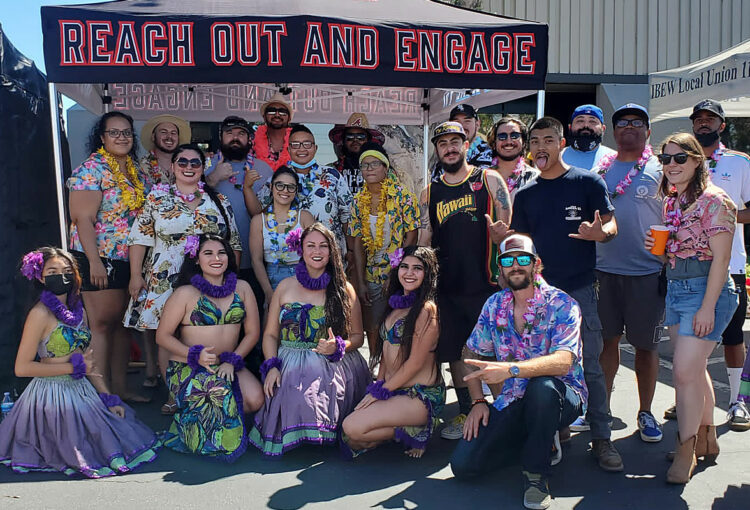Federal Funds Supercharge IBEW’s Drive Toward a Green Hydrogen Future
ARCHES to Create Thousands of Jobs Across California
By Grant Slater
$1.2 billion in federal Clean Energy grants are coming to California, thanks to IBEW 11, working in partnership with the State Building Trades Council, to drive investment in dozens of green hydrogen projects from Lancaster to Long Beach. This massive influx of funds will spur innovation, reduce carbon emissions and create thousands of union jobs in the coming years.
The federal government’s nearly $50 billion investment nationwide – one of the largest outlays for clean manufacturing and jobs in U.S. history – will create seven hydrogen hubs across the country. The Department of Energy funding flows directly from the $1 trillion Bipartisan Infrastructure Bill passed into law by the Biden-Harris administration two years ago.
“This $1.2 billion will leverage 10 times that in private and state funding, resulting in $10 to $13 billion in indirect investment spread across 31 projects,” said Chris Hannan, the recently elected President of the State Building and Construction Trades Council of California. “This hub is going to provide thousands of great jobs for members of building trades unions as well as so many great opportunities for IBEW 11 members.”
The Trades Council and IBEW 11 were founding members of The Alliance for Renewable Clean Hydrogen Energy Systems, or ARCHES, which led the federal grant application.
ARCHES required each of the proposed projects to enter into a Project Labor Agreement, and the union mandate became a key part of securing the federal funds. The California Hydrogen Hub is expected to create 220,000 direct jobs – 130,000 of those in construction.
“There’s no way we could have been successful in this effort without IBEW 11,” Hannan said. “They were on it from day one.”
IBEW had the ear of the federal government and was able to secure commitments for workers from the “most union friendly administration in American history, led by President Biden, who mentions the IBEW in every one of his labor speeches,” IBEW 11 Business Manager Joël Barton said.
The ports of Long Beach and Los Angeles expect to see more than half a million dollars in immediate investment and hundreds of jobs for IBEW workers “right off the bat,” Barton said.
In the pursuit of hydrogen funding, union leaders did not wait for politicians and policymakers to come to them for support. They surveyed the energy landscape, held their finger up to the winds of change, and determined that hydrogen technology provided the best route to infrastructure funding.
“From what we have investigated, it’s clear that clean hydrogen is the future,” Barton said. “We know the brothers and sisters of IBEW are already at the forefront of electrification. So, we’ve been the first to step out with the governor on his clean energy goals.”
Years ago, IBEW helped gather a small group of stakeholders that would grow over time and gain momentum, eventually becoming ARCHES.
Tommy Faavae, from the union’s Business Development department, said IBEW 11 and partners from the Los Angeles chapter of NECA were in the room when ARCHES was just a concept, before the coalition even had a chance to coalesce under a name.
As it became clear that there was money to chase, Faavae and the rest of the coalition worked to build consensus among local leaders.
“The City of LA wanted to be big dog in the house and run their own application, but we wanted City of LA to get on board with us,” he said. “It took a lot of politics, a lot of maneuvering.”
With the coalition in place, the ARCHES team submitted California’s application in April, and then, the wait began. With the announcement on October 13, Faavae and the rest of the team breathed a sigh of relief.
“I didn’t know what to expect, but I wasn’t expecting $1.2 billion,” Faavae said, laughing. “That sealed the deal. This is huge! It’s huge for California, and it’s huge for us as a union.”
Negotiations have already begun to determine how the federal funds will be parsed out among projects across the state to meet ambitious climate goals, including a target to have cities like LA running on 100 percent renewable energy by 2035.
“Today we are moving from concept to reality – advancing clean, renewable hydrogen in California which is essential to meeting our climate goals,” said Governor Gavin Newsom.
The emphasis will be to build out infrastructure that can generate and deliver clean hydrogen from renewable energy sources like wind and solar, Faavae said.
The new sources of hydrogen will flow to key emissions drivers in the state and sources of air pollution that are among the hardest to decarbonize like public transportation, heavy duty trucking, and port operations. The Port of Long Beach has set a goal to have zero-emission terminal equipment by 2030.
Alongside delivery infrastructure and port operations, the City of LA voted this year to retrofit the aging, gas-fired Scattergood Generating Station near El Segundo to generate electricity from hydrogen, an $800 million project that the city plans to push through phase one of construction by 2029.
“Repowering those turbines to be hydrogen turbines, that’s no small thing,” Faavae said. “And it’s something that we at IBEW are well-equipped and prepared to do.”
